The best holiday destinations in Europe you can reach by train from London

It’s 2024, so the idea of sustainable travel is hardly a new concept. There’s a certain attraction to ditching long plane journeys and airport hassle but still getting to your holiday destination. If there are other ways to travel, why fly? In most cases, train stations are located in the heart of the city so you’ll arrive closer to where you want to be, rather than have to spend money on taxis or other forms of transport.
While rail travel in the UK remains as expensive and controversial as ever, train companies across Europe have been refining and expanding their services to make travelling across the continent more convenient.
From Eurostar’s cross-channel journeys to overnight sleeper trains that take you through several countries while you snooze, train travel across the region has never been as accessible. With the summer fast approaching, take advantage of the rails to reach some of Europe’s best destinations.
Here’s our guide to some of the finest spots in Europe that you can get to within 24 hours by train from London.
Paris, France

The French capital has been a brilliant city to visit by train since the launch of Eurostar in 1994. Nowadays, trains from St Pancras International will get you there in around two hours and 16 minutes, making it a potential day-trip destination as well as a great place for a weekend break. As a transport hub, it also serves as the changing destination for many of the other cities on this list, with easy travel to the rest of France, Belgium and Spain, among others.
Read more on Europe travel:
I want wine and carbs on an Italy holiday – here’s how to do it with wellness in mind
The best vegan places to eat in Paris, from restaurants to patisseries
Incredible lesser-known European beach destinations for sun without the crowds
From the Louvre to the Eiffel Tower, explore the city’s various ‘arrondissements’ (districts) for a chance to take in world-famous landmarks, galleries and museums while wandering through the city’s streets. The 19th-century Hausmannian architecture adds to the city’s unique style and romance, while a world-famous gastronomic scene offers everything from fine dining to casual patisseries.
How to get to Paris by train
Eurostar runs up to 17 services per day from St Pancras to Gare du Nord. Tickets from £78 return, and they also offer packages that include hotels and train travel. eurostar.com
Where to stay
Set in the centre of the city, Chouchou is a sophisticated Parisian hotel, from the facade to the elegant interiors. It is also well within walking distance for several of the city’s main landmarks, including the Champs-Elysees, Notre Dame and the Louvre.
Bruges, Belgium
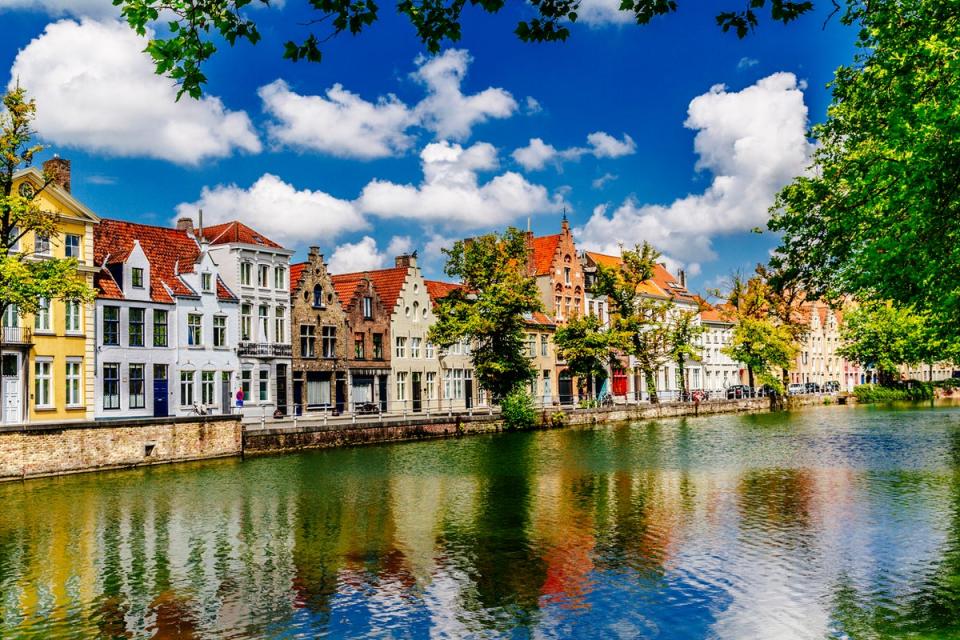
Bruges is another destination that benefits from Eurostar’s routes into France and Belgium. Trains from London change at Brussels-Midi/Zuid, with a further 70 minutes before reaching the northern city. It’s also a great spot for further travel around the country, with trains to Ghent and Antwerp taking just 30 and 90 minutes, respectively.
Once in Bruges, enjoy the picturesque canals and dramatic architecture as you wander its winding streets. Winter visits are great for the famous Christmas Market, although the city comes alive in summer, with the colourful buildings and canals resplendent in the sunshine. The historic core is a Unesco Heritage Site, with several interesting landmarks, including the City Hall, the Groeninge Museum and the Belfry.
How to get to Bruges by train
The total journey time from London is around three hours and 25 minutes, with a change in Brussels after roughly one hour and 50 minutes. Return tickets from London to any Belgian station start at £102. eurostar.com
Where to stay
Despite being housed in a 14th-century building, Hotel Monsieur Ernest has slick, modern interiors that are at odds with the Gothic and Middle Aged architecture in areas such as the nearby Market Square. Combined with the preserved period features, it makes for an interesting mix.
Venice, Italy
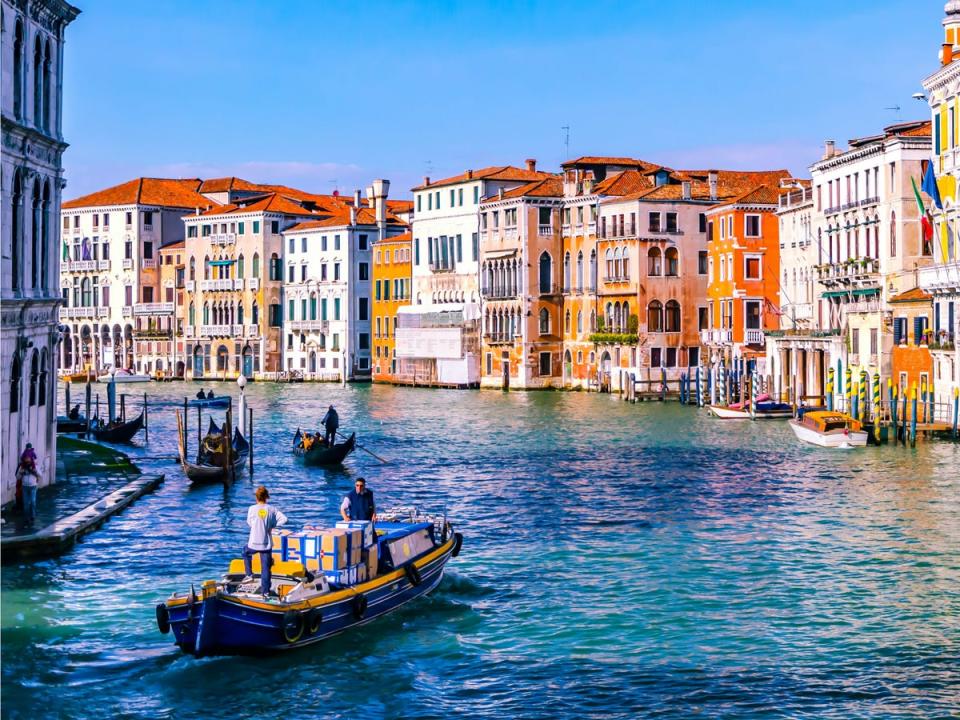
If you don’t mind making a day of it, you can catch a post-breakfast train in Paris and arrive in Venice in the evening. Glide beneath bridges on a gondola, taking in the stunning Renaissance architecture. Explore St. Mark’s Square, a vibrant hub with cafes and the iconic basilica. Get lost in the maze of alleyways, stumbling upon hidden squares and artisan workshops. For a unique experience, visit Murano, famous for its centuries-old glassblowing tradition, or Burano, a colorful island known for its lace.
There’s plenty for food lovers, too. Make sure to try chichetti, which are small Venetian tapas, perfect for a casual lunch or aperitivo. They come in a variety of flavours, from seafood options like salt cod crostini to meatballs and vegetables.
How to get to Venice by train
The TGV-Lyria from Paris to Zurich is an impressive 320km/h (199mph) double-deck high-speed train. Change trains in Zurich for the prettiest part of the route where a EuroCity train passes Lake Como and heads through the Alps over the Gotthard route, past pretty Lake Lugano. Finally, from Milan you’ll take a high speed Frecciarossa operated by Italian Rail to Venice.
Where to stay
Philippe Starck designed the interiors of the 16th-century Palazzina Grassi. It’s 26 rooms are full of signature Starck touches: mirrored walls, ceilings and chairs, carnival masks and stools that look like silver-coated tree-stumps. There’s no check-in desk here – it’s way too cool for that – but there is a Krug Lounge (the second in the world) and a beautiful main room – low-lit and framed by Corinthian columns – which serves as a restaurant, bar and lobby area.
Berlin, Germany
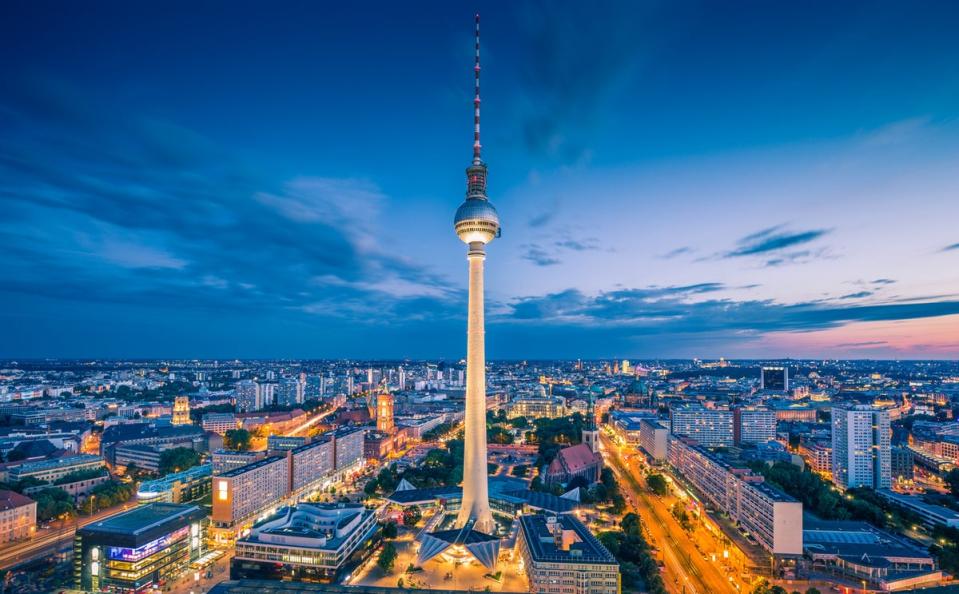
With new overnight routes launched by Dutch-Belgian rail company European Sleeper in May 2023, Berlin has suddenly become much more accessible by train. The German capital is another trendy European destination, whether you’re a hardcore partygoer or a history buff. Of course, many visitors choose to sample both on their visit, so time can be spent trying to gain entry to the city’s notoriously strict nightclubs or wandering around the remaining sections of the Berlin Wall.
While other sites such as Checkpoint Charlie or the Brandenburg Gate attract thousands of tourists, it’s a good idea to simply wander some of the city’s varied districts. Mitte is the heart of the city, though Kreuzberg and Prenzlauer Berg are other great options for an afternoon wander.
How to get to Berlin by train
The overnight sleeper train runs from Brussels, with services departing at 7.22pm local time on Mondays, Wednesdays and Fridays and arriving at 6.48am the next morning. The company have aligned its schedules with Eurostar’s arrivals, meaning the changeover should be easy enough. europeansleeper.eu
Where to stay
The MotelOne chain are known for good accommodation options at tempting prices, and the Hackescher Market location is no different. As always, interiors are pared-back and contemporary, but the real selling point here is the location – you’ll be near Alexanderplatz, the TV Tower and Brandenburg Gate.
Prague, Czech Republic
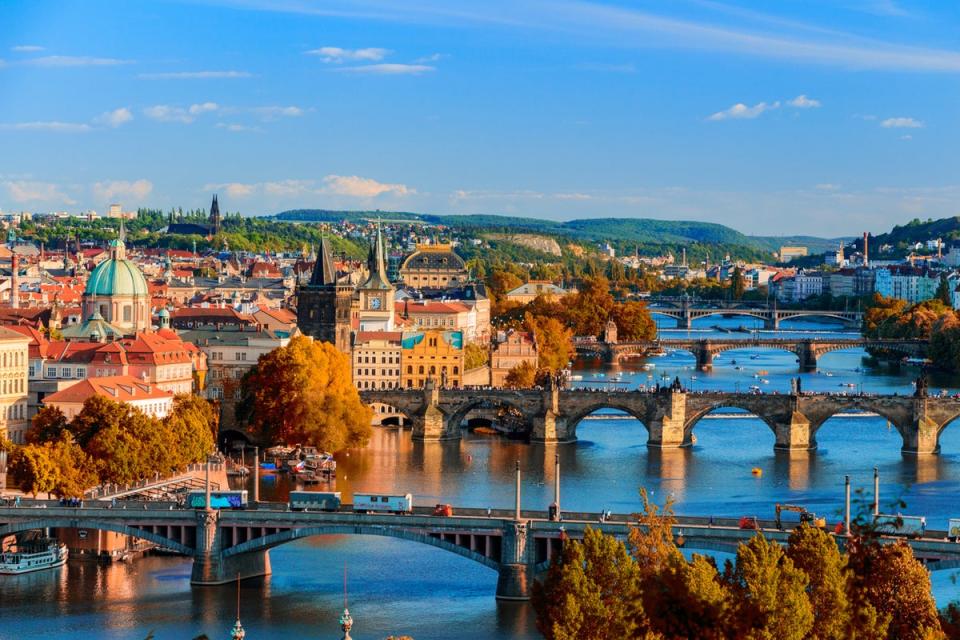
The European Sleeper route added two stops in 2024: Dresden and Prague. This makes travelling from the UK (and indeed Brussels) far easier. If you’re travelling from London, you can jump on an afternoon Eurostar to Brussels and then book a cosy couchette to get a good night’s rest while the sleeper travels next to the river Elbe overnight.
Prague’s focal point is its remarkable Old Town, replete with winding cobbled streets and dozens of choices for drinking and dining. Old Town Square is the heart of the city, while Wenceslas Square is just five minutes away. Across the river, on a hill overlooking the city, stands Prague Castle, the largest ancient castle in the world.
How to get to Prague by train
Your best bet is to travel by Eurostar to Brussels (from £78 return), changing there and going onwards to Prague. total journey time between 14 and 20 hours on average (depending on what time you leave London). Tickets for the final leg start at £45 for a single. europeansleeper.eu
Where to stay
Art and decoration are the focus at NYX Hotel Prague, with an eccentric mix of decorations – including arcade machines in the lobby and a motorbike in the restaurant. It’s less than a mile from Wenceslas Square and Charles Bridge, making it a great option for those who want to explore the city extensively.
Barcelona, Spain
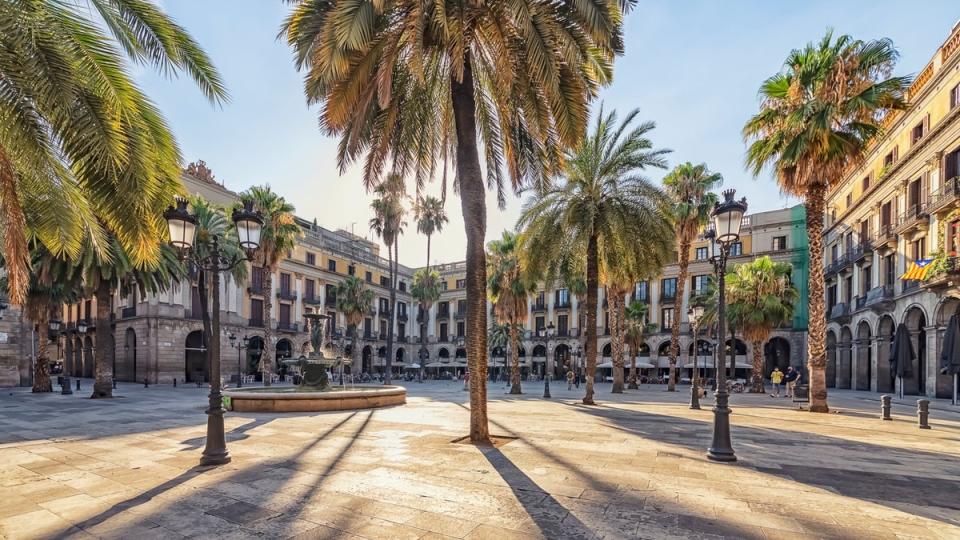
With trains operating every day from Paris, Barcelona is a surprisingly easy city to reach from the UK. TGV operate fast trains that take just over six hours, meaning that you can easily have breakfast in London and end the day sipping cocktails opposite the Sagrada Familia. Spain’s rebellious second city is the cosmopolitan cousin of Madrid, where European and Spanish influences mix to create a unique, eclectic destination.
Its location is perfect for holidays, as the sprawling metropolis leads you right to the coast, where long stretches of golden sand and warm sea meet bustling beach bars and nightclubs. There are more tourist sites than you could possibly cover in a single weekend break – from the Gaudi buildings to the Olympic Park at Montjuic – but what sets the city apart from other European destinations is the quality and range of things to do. Whether watching football matches at Camp Nou or spending an afternoon strolling through the Picasso Museum, many of its sites and activities are among the “best in class” across the whole of Europe.
How to get to Barcelona by train
One of the easier journey’s on the list, and it can be done in a day if you leave early – the average journey time is roughy 12 hours, including waiting and changing times. After leaving the Eurostar at Paris Gare du Nord, cross the city to Gare du Lyon, where six-hour trains to Barcelona depart three times a day. Prices for the second leg start at £44. sncf-connect.com
Where to stay
Located on the famous Rambla (at the start, near Placa Catalunya), Hotel 1898 has a perfect location for exploring the whole city (but especially the Gothic Quarter, Poblenou and the Old Town). Its rooftop terrace and pool also offer sweeping views all the way out to sea.
Vienna, Austria
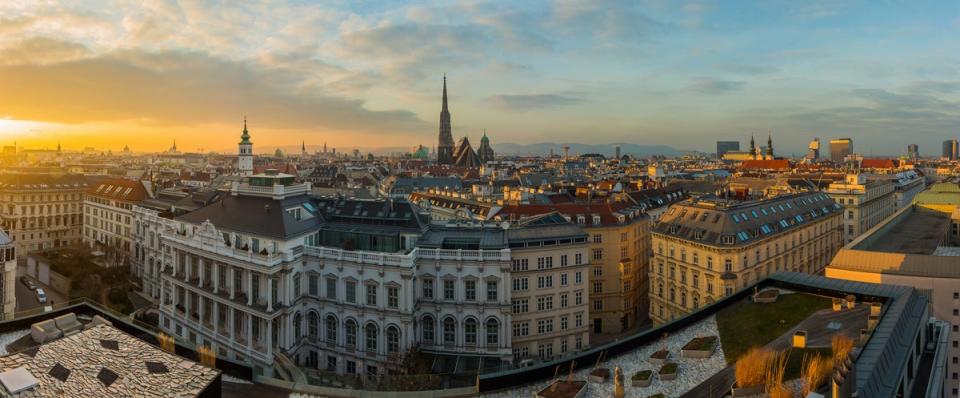
Though the journey to Vienna can be done in a single day from London, Austria’s own OBB train service offers comfortable overnight trains from Brussels that reach the capital pleasantly early in the morning. Arriving just after 9am, you’ll be able to make the most of your first day in this grand old city.
It is perhaps no surprise that the city of Freud, Mozart and Beethoven has a sophisticated vibe. This feeling is increased to by the vibrant culture and arts scene found today, while its well-preserved architecture reflects a rich and complicated history that stretches back to Roman times. Here, Gothic cathedrals meet Baroque palaces and the world-famous Renaissance Revival-style Opera House – all buildings which help to preserve a sense of elegance and grandeur.
How to get to Vienna by train
The most time-effective option is to make use of Austria’s OBB Nightjet service. Take the Eurostar to Brussels and change for a direct overnight train to Vienna. The Nightjet leaves at 7.32pm local time, arriving in Vienna at 9.05am. Single tickets for this leg start at just under £80. nightjet.com
Where to stay
The Guesthouse sits right in the heart of Vienna’s Old Town, with many rooms overlooking the Staatsoper and the Albertina museum.
Amsterdam, The Netherlands
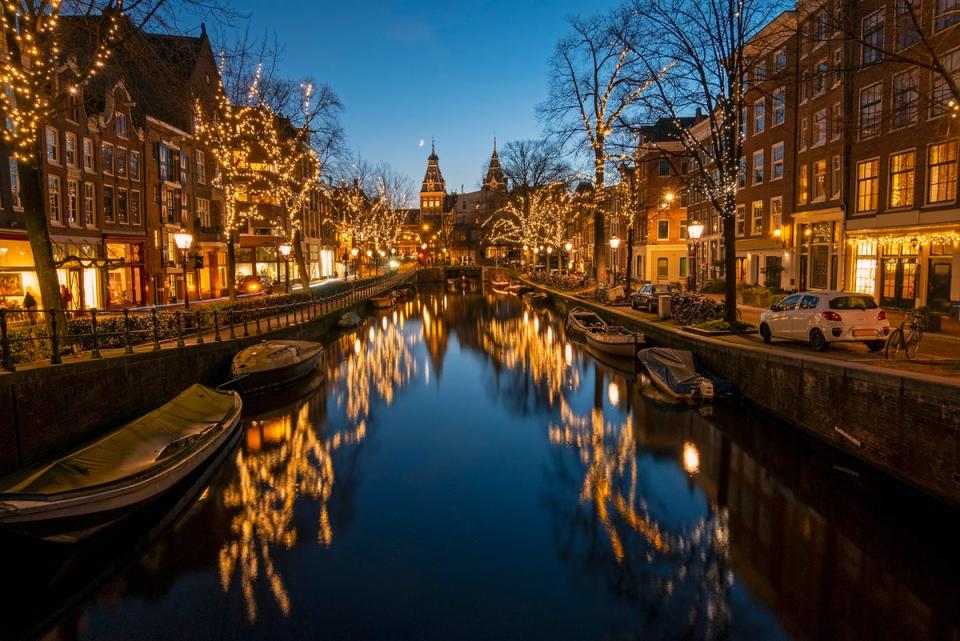
While the train to Amsterdam takes a much longer than flying, take this opportunity to see great countryside views in northern France and Belgium. You’ll arrive at Amsterdam Centraal, where you can step out of the station and right into the centre of the city.
The Dutch capital’s scenic network of canals – backed by seemingly endless rows of 17th-century houses – steal the show in this exceptionally walkable (and cyclable) city, while its parks, such as Vondelpark and Oosterpark, provide numerous pleasant green areas. The Red Light District attracts hundreds of visitors every day, while historical sites and museums including the Anne Frank House and Rijksmuseum are among the other worthwhile attractions.
How to get to Amsterdam by train
Amsterdam can be reached in just under four hours on Eurostar. Like all of the other direct Eurostar services, return tickets in standard class start at £78. eurostar.com
Where to stay
The Craftsmen is a classic example of a quirky, characterful Dutch hotel. Sitting along the Singel canal near the city centre, its cosy interiors and eccentric decoration make it a hotel fitting of such a fantastic European city.
Milan, Italy
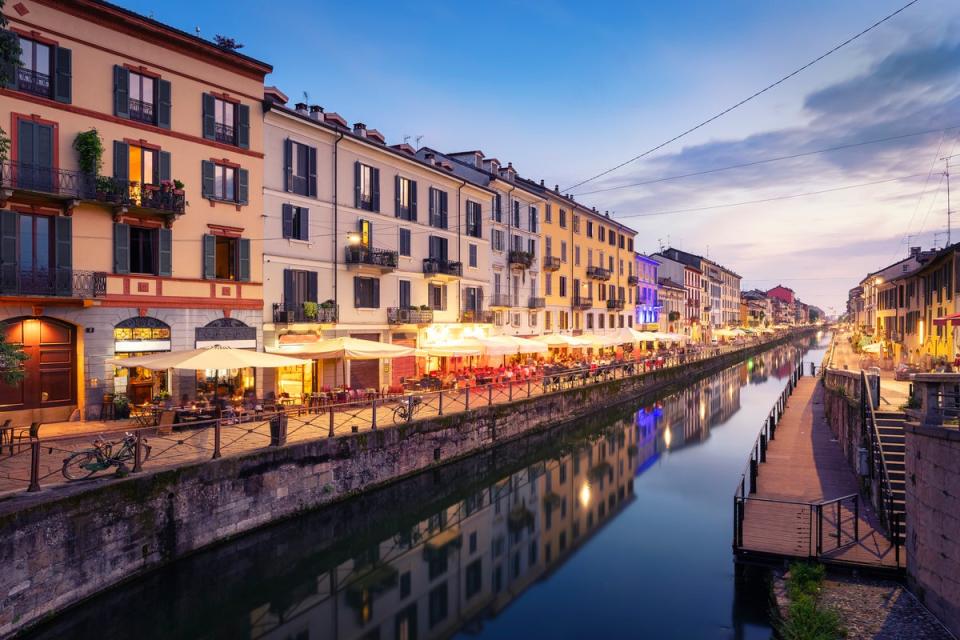
The journey to Milan offers scenic views as it passes through sections of the French and Italian Alps. Italy’s second city is known worldwide for the finer things in life – whether that be cuisine, high-end fashion or expensive aperitifs – and you can find them all in abundance when you arrive.
The Duomo cathedral (and its piazza) are at the heart of the city; from here, you can easily reach sites such as the Galleria Vittorio Emmanuele, the Santa Maria basilica and the Sforzesco Castle. If you want to wander further afield, head to the lively canal district of Navigli, or NoLo, one of the city’s social hubs.
How to get to Milan by train
From Paris Gare du Nord, make your way to Gare du Lyon, where you’ll find that a direct TGV (or Frecciarossa, Italy’s competition to TGV) will take you straight to Milan in anywhere between 10 and 22 hours. Prices start at £58 for a single ticket. sncf-connect.com
Where to stay
Hotel Manzioni is located in Milan’s so-called “Golden Rectangle” of high-end fashion (between the streets of Via Sant’Andrea and Monte Napoleone). It is a suitably opulent hotel for the fashion capital – think refined, traditional interiors – that is also within a mile of several of the city’s important landmarks.
Read more of our reviews of the best hotels in Europe

